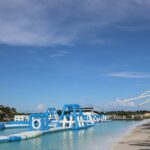Commercial diving is essential for industries like marine construction, underwater welding, and even salvage operations. While these underwater operations may seem fascinating to outsiders, they carry significant risks for divers and support teams. The margin for error is slim, and safety is paramount.
This blog explores how professional divers ensure marine safety in subaquatic work environments. From planning to executing underwater operations, we’ll cover the equipment, protocols, and skills needed to safeguard lives and the environment in this challenging field of work.
The Challenges of Underwater Operations
Diving into the depths comes with unique challenges that aren’t found on land-based job sites. These challenges underscore the importance of having rigorous safety measures in place.
Visibility and Weather Conditions
Poor visibility is often a concern in underwater operations. Water clarity can vary due to environmental factors like sediment, currents, or algae blooms. Similarly, weather patterns at the surface can impact conditions below.
Risk of Decompression Illness
Divers managing tasks in deep waters must carefully monitor their ascent rates and time underwater to avoid decompression illness (commonly referred to as “the bends”). Failing to follow decompression protocols can result in serious health conditions.
Equipment Failures
While professional-grade equipment is vital for safe underwater work, the harsh marine environment can lead to equipment malfunctions. This underscores the importance of regular maintenance and contingency planning.
Core Safety Measures for Commercial Diving
Safety isn’t a single mechanism; it’s a comprehensive system designed to address the diverse risks associated with underwater operations. Here’s how divers ensure marine safety during commercial tasks.
1. Pre-Mission Planning
A successful and safe operation begins long before entering the water. Pre-mission planning involves identifying environmental conditions, assessing risks, and clearly defining roles for each team member.
Key aspects of pre-dive planning include:
- Environmental Assessment: Understanding water temperature, currents, and potential hazards underwater.
- Emergency Planning: Defining clear protocols for managing emergencies like equipment failure or medical issues.
- Team Coordination: Ensuring every team member—from divers to surface support—is on the same page.
2. Specialized Equipment
Advanced equipment ensures divers can perform delicate tasks safely and efficiently. From helmets to air supply systems, every piece of gear plays a crucial role in maintaining safety below the surface.
Essential commercial diving equipment includes:
- Dive Helmets: Provide communication capabilities and protect the diver from underwater hazards.
- Reliability-Rated Gear: Includes high-quality depth meters and air gauges.
- Underwater Tools: Designed for the specific job, like welding equipment or underwater cutting gear.
3. Continuous Monitoring and Communication
Maintaining a direct line of communication between the diver and the support team on the surface is critical for operational awareness and responding to any potential risks.
Modern commercial divers rely on communication systems integrated into their equipment, ensuring they are always in contact with surface teams monitoring their progress. These systems allow immediate reporting of any issues.
Training and Protocols for Commercial Divers
No successful underwater operation happens without highly trained professionals. Certifications, experience, and adherence to industry protocols create the foundation for safe marine operations.
Certifications and Skills
Commercial divers must often complete various certifications, spanning from basic scuba training to highly specialized underwater skills like welding, cutting, or salvage work.
Some key certifications include:
- Occupational Sea Diving Certificates
- Successful Completion of CPR and First Aid Training
- Commercial and Industrial Diving Licenses
Continuous education in marine safety practices is encouraged to stay updated on regulations and best practices.
Adherence to Procedures
Strict adherence to standardized procedures ensures efficiency and safety. Teams must follow these protocols closely, whether it’s for equipment checks, water entry/exit processes, or emergency actions.
Examples of Marine Safety in Practice
Case 1: Pipeline Repair Projects
When repairing underwater pipelines, divers use advanced sonar technology and remotely operated vehicles (ROVs) to inspect damage before entering the water themselves. This minimizes time spent underwater.
Case 2: Offshore Structure Maintenance
For work involving offshore platforms and structures, safety measures often include creating an “Umbilical Zone” where divers have direct surface control over their oxygen. Both live camera updates and sonar readings guide their tasks.
The Role of Technology in Enhancing Marine Safety
Technology is transforming underwater operations. Many teams now use autonomous or remotely operated vehicles (AUVs and ROVs) for inspection tasks, reducing the need for human divers in potentially dangerous environments.
Additionally, data-enabled resource management platforms allow teams to track environmental changes in real time, from water temperature to salinity, improving both the accuracy and safety of commercial projects.
Final Thoughts
Ensuring safety in subaquatic work environments requires more than just equipment and procedures. It’s about creating a culture of preparedness, continuous learning, and shared responsibility among all team members.
If you’re interested in exploring how modern advancements can maximize safety and operational efficiency in commercial diving, check out this website for additional industry insights and tools. Remember, prioritizing safety isn’t just good practice; it’s essential for sustaining successful underwater operations.












